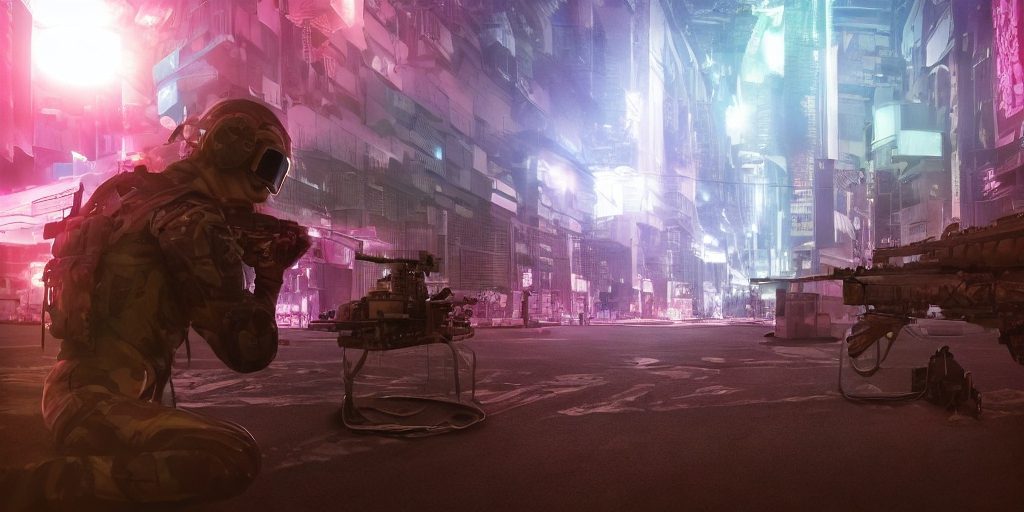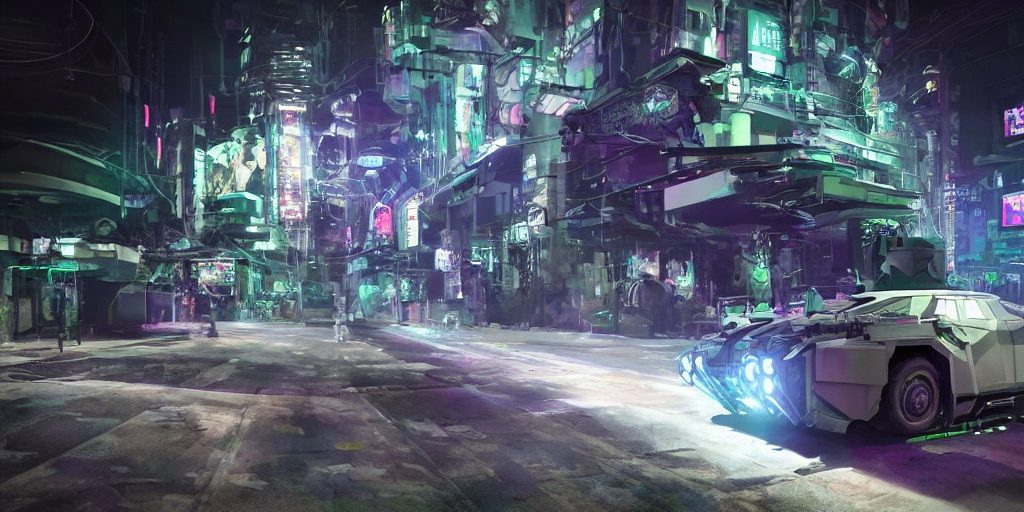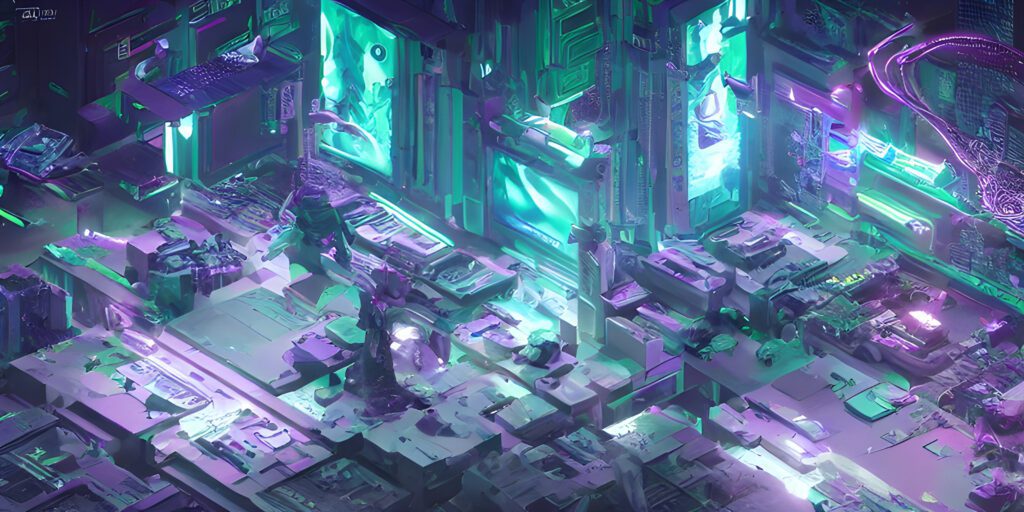

In today’s article, we will explore a fascinating topic that has captivated the minds of many: Night vision versus infrared technology in the military. Have you ever wondered how soldiers are able to navigate through the darkness and detect hidden threats during their operations?
We will uncover the secrets behind these remarkable technologies and shed light on their crucial role in modern military strategies. So, join us on this illuminating journey as we delve into the world of night vision and infrared in the military.
Night Vision in The Military
Night vision technology plays a crucial role in the military, providing soldiers with enhanced visibility and situational awareness during low-light conditions. With the ability to amplify available light, night vision devices allow military personnel to see clearly in environments where traditional vision would be severely limited or even impossible. In this article, we will explore the various applications of night vision in the military, the types of night vision devices used, and compare night vision technology to infrared imaging.
Military Applications of Night Vision
Night vision technology has a wide range of applications in the military. It is extensively used by ground troops, special forces, and even pilots to carry out vital missions with increased effectiveness and safety. One of the primary applications is for surveillance and target acquisition. Night vision devices enable military personnel to monitor and track enemy movements during the cover of darkness, providing valuable intelligence for tactical decision-making.
Furthermore, night vision is essential in combat operations. It enables soldiers to navigate through unfamiliar terrain, detect enemy movements, and engage targets accurately, giving them a significant advantage over adversaries. By using night vision, soldiers can maintain stealth and surprise, potentially turning the tide of battle in their favor.
Another critical application of night vision is in search and rescue missions. When time is of the essence, night vision devices allow rescue teams to search for missing personnel or downed aircraft in low-light or dark conditions. This technology greatly enhances their ability to locate and extract individuals in distress, increasing the chances of a successful rescue.
Night Vision Technology


Night vision technology works by capturing and amplifying available light, allowing users to see in dark environments. There are three main generations of night vision technology: Gen 1, Gen 2, and Gen 3.
Gen 1 night vision devices are the most basic and affordable. They provide a limited range of detection and lower image resolution, but they are still effective for most military applications. Gen 2, on the other hand, offers improved image quality, range, and resolution. It incorporates microchannel plates to amplify the available light.
The most advanced night vision technology is Gen 3, which offers superior performance in terms of image clarity, range, and resolution. It features gallium arsenide photocathodes and an ion barrier film, resulting in clearer and brighter images compared to previous generations.
Types of Night Vision Devices


There are several types of night vision devices used in military operations. One of the most common is the night vision goggles (NVG). These goggles can be worn by soldiers and provide a head-mounted display of the surrounding environment. NVGs are lightweight, ergonomic, and offer hands-free operation, making them ideal for extended use during missions.
Night vision scopes are another commonly used device. These devices attach to firearms and provide enhanced visibility during targeting and engagement. They are highly valuable for snipers and other precision shooters who operate in low-light conditions.
Additionally, the military utilizes night vision binoculars for observation and reconnaissance purposes. These binoculars offer a wider field of view and allow for better depth perception compared to monocular devices.
Infrared in The Military
While night vision technology excels in low-light conditions, infrared imaging provides a different set of advantages. Infrared technology detects the heat signatures emitted by objects and living beings, enabling military personnel to detect and monitor their presence. In this section, we will explore the military applications of infrared, the technology behind it, and the various types of infrared devices.
Military Applications of Infrared
Infrared technology has several crucial applications in military operations. One of its primary uses is in target acquisition and tracking. By detecting the heat signature of enemy personnel or vehicles, military personnel can accurately locate and monitor potential threats. Infrared technology allows for a covert approach by avoiding the need for visible light, reducing the risk of detection.
Moreover, infrared imaging is highly valuable in surveillance operations. It allows military personnel to monitor large areas and identify potential hostile activities more effectively. Infrared cameras can be deployed on unmanned aerial vehicles (UAVs) or ground-based surveillance systems to provide real-time situational awareness and actionable intelligence.
Additionally, infrared technology is widely used in border security operations. The ability to detect human or animal movement even in complete darkness provides an invaluable tool for securing borders and preventing unauthorized crossings.
Infrared Technology
Infrared technology operates by detecting and analyzing the heat signatures emitted by objects. It utilizes sensors that can detect infrared radiation and convert it into a visible image or data. There are two main types of infrared imaging: active and passive.
Active infrared imaging involves the use of infrared illuminators to emit infrared radiation. This radiation bounces off objects and is captured by the sensor, allowing for the creation of a visible image. This type of infrared imaging is particularly useful in situations where the ambient heat signatures are insufficient for clear detection.
Passive infrared imaging, on the other hand, relies solely on the heat signatures emitted by objects. It does not require the use of additional infrared light sources. Passive infrared technology is often used in military operations due to its stealthy nature and ability to operate in complete darkness.
Types of Infrared Devices
Infrared devices come in various forms and serve different purposes in military operations. Infrared cameras and sensors are commonly used for surveillance and target detection. These devices can be mounted on vehicles, or aircraft, or deployed as ground-based units.
Infrared beacons are another type of infrared device used in the military. They emit infrared signals that can be detected by night vision devices, aiding in navigation and coordination between different units. Infrared beacons can be invaluable during operations where maintaining stealth and avoiding detection is crucial.
Infrared laser designators and illuminators are also widely utilized by military personnel. These devices emit highly focused infrared light, allowing for precise targeting and enhanced visibility in low-light conditions. They are often mounted on weapons to improve accuracy and increase the success of military operations.
Comparison between Night Vision and Infrared
While both night vision and infrared technology serve critical roles in the military, they have distinct working principles and characteristics that make them suitable for different situations. In this section, we will compare the working principles, range of detection, and effectiveness in different conditions of night vision and infrared.
Working Principles
Night vision technology operates by amplifying the available light, allowing users to see in darkness. It captures photons and converts them into electrons, which are then amplified and displayed as visible images. Night vision devices require at least some ambient light sources, such as moonlight or starlight, to function effectively.
On the other hand, infrared technology relies on detecting the heat signatures emitted by objects. It does not require visible light and is capable of detecting heat even in complete darkness. By analyzing the differences in heat emitted by objects and the surrounding environment, infrared devices can create visible images or data.
Range of Detection
Night vision devices have a limited range of detection and are most effective at shorter distances. While Gen 3 night vision devices can offer detection ranges of up to 300 meters, the quality of the image decreases as the distance increases. Factors such as the quality of the device, atmospheric conditions, and available light sources also affect the range of detection.
Infrared technology, on the other hand, has a longer range of detection compared to night vision. On average, infrared devices can detect objects at distances of several kilometers, depending on the specific technology and model. This extended range makes infrared particularly useful for long-range surveillance and target acquisition.
Effectiveness in Different Conditions
Night vision technology performs exceptionally well in low-light conditions where there is at least some ambient light available. It allows for clear visibility and the ability to distinguish objects and individuals. However, night vision devices can be limited in adverse conditions such as heavy fog, smoke, or complete darkness where there are no ambient light sources.
In contrast, infrared technology is effective in complete darkness or adverse weather conditions that impede visibility. It is immune to factors such as fog, smoke, or even camouflage designed to blend with the surrounding environment. The ability to detect heat signatures enables military personnel to locate and track targets that may be concealed by traditional means.
When it comes to choosing between night vision and infrared, the specific operational requirements and environmental conditions play a crucial role. While night vision excels in low-light scenarios, infrared provides unparalleled visibility in complete darkness and adverse conditions.
Advantages of Night Vision in Military Operations
Night vision technology offers several advantages that make it a valuable tool for military operations. In this section, we will explore these advantages, which include enhanced situational awareness, improved safety and tactical advantage, and versatility and adaptability.
Enhanced Situational Awareness
One of the key advantages of night vision technology is the enhanced situational awareness it provides to military personnel. By allowing them to navigate and operate effectively in low-light conditions, night vision devices help soldiers identify potential threats, evaluate the battlefield, and make informed decisions. This improved awareness significantly enhances the safety and success of military operations.
Improved Safety and Tactical Advantage
Night vision technology offers a significant safety advantage by enabling military personnel to operate without relying solely on visible light sources. This reduces their vulnerability to potential ambushes or surprise attacks. Additionally, night vision devices provide soldiers with a tactical advantage by allowing them to see their surroundings clearly while remaining undetected by the enemy.
Versatility and Adaptability
Night vision devices are versatile and can be used in a wide range of military operations. They can be handheld, head-mounted, or integrated into weapons or vehicles, depending on the specific mission requirements. This adaptability allows military personnel to use night vision technology in various scenarios, from reconnaissance and surveillance to combat and search and rescue missions.
Advantages of Infrared in Military Operations
Infrared technology offers its own set of advantages that make it a valuable tool in military operations. These advantages include the ability to penetrate obscurants, stealthy operations, and the detection of heat signatures. Let’s explore each of these advantages in detail.
Ability to Penetrate Obscurants
Infrared technology can penetrate obscurants that may hinder visibility in traditional visual or night vision systems. Whether it is fog, smoke, or dust, infrared allows military personnel to see through these obscurants. This capability is particularly invaluable in situations where the enemy may attempt to use such obscurants to conceal their movements or positions.
Stealthy Operations
Infrared technology enables military operations to be conducted with a greater degree of stealth. Since infrared imaging relies on detecting heat signatures rather than visible light, it allows soldiers to remain hidden and undetected by adversaries who rely on traditional vision or night vision technology. This stealthiness can provide a significant advantage during reconnaissance missions or covert operations.
Detection of Heat Signatures
One of the most significant advantages of infrared technology is its ability to detect heat signatures. By focusing on the heat emitted by objects or living beings, infrared devices allow military personnel to locate and identify potential threats even in complete darkness or adverse conditions. This capability is particularly useful for surveillance, target acquisition, and search and rescue operations.
Disadvantages of Night Vision in Military Operations
While night vision technology offers numerous advantages, it is not without its drawbacks. In this section, we will explore the disadvantages of night vision in military operations, including limited performance in adverse conditions, expensive equipment and training, and dependency on ambient light.
Limited Performance in Adverse Conditions
Night vision devices rely on some level of ambient light to function effectively. In adverse conditions such as heavy fog, smoke, or complete darkness, these devices may experience reduced performance or even become ineffective. This limitation can pose significant challenges in situations where visibility is severely limited.
Expensive Equipment and Training
Night vision technology is relatively expensive, both in terms of equipment and training costs. High-quality night vision devices can be costly, making it challenging for some military units or countries to acquire and maintain a sufficient number of devices. Additionally, the training required to operate night vision equipment effectively requires specialized knowledge and skills, adding to the overall costs.
Dependency on Ambient Light
Night vision devices rely on the presence of ambient light sources, such as moonlight or starlight. In situations where these light sources are scarce or entirely absent, night vision devices may not provide adequate visibility. This dependence on ambient light can hinder the effectiveness of night vision technology during certain missions or in specific environments.
Disadvantages of Infrared in Military Operations
Infrared technology, despite its advantages, also has its own set of disadvantages. In this section, we will explore these disadvantages, including limited resolution and clarity, a higher risk of false alarms, and the inability to distinguish fine details.
Limited Resolution and Clarity
Infrared imaging typically offers lower resolution and clarity compared to traditional visual or night vision systems. The images produced by infrared devices may not provide the same level of detail or definition, making it challenging to identify fine details or distinguish between objects with similar heat signatures. This limitation can impact certain military operations that require precise identification or targeting.
Higher Risk of False Alarms
Infrared technology can be susceptible to false alarms, especially in situations where heat signatures are abundant or constantly changing. Environmental factors, such as changes in weather or the presence of non-threatening heat sources, can trigger alarms or mislead operators. This higher risk of false alarms can potentially disrupt or distract military personnel, reducing their overall effectiveness.
Inability to Distinguish Details
Due to the reliance on heat signatures, infrared devices may struggle to provide the same level of detail as other imaging technologies. Fine details, such as facial features or small objects, may not be easily discernible in infrared images. This limitation can restrict the usefulness of infrared technology in certain military operations where identifying specific details is crucial.
Examples of Night Vision and Infrared Use in the Military
Night vision and infrared technology are extensively used in various military operations. In this section, we will explore some examples of how these technologies are employed by military personnel, including surveillance and target acquisition, combat operations, and search and rescue missions.
Surveillance and Target Acquisition
Night vision and infrared technology are indispensable in surveillance and target acquisition operations. Military personnel use these technologies to monitor enemy movements, gather intelligence, and identify potential threats. By employing night vision goggles or infrared cameras, soldiers can conduct covert surveillance or reconnaissance missions and gain a significant tactical advantage.
Combat Operations
Night vision and infrared technology greatly enhance the effectiveness and safety of military personnel in combat operations. Soldiers equipped with night vision devices can navigate through hostile environments with improved situational awareness, engage targets accurately, and maintain stealth and surprise. Infrared imaging allows for the detection of heat signatures, aiding in locating enemy combatants or concealed positions.
Search and Rescue Missions
Night vision and infrared technology play a crucial role in search and rescue missions, particularly in low-light or dark conditions. Whether it is locating missing personnel or downed aircraft, night vision devices and infrared cameras allow rescue teams to effectively search and extract individuals in distress. The ability to see through darkness or obscurants greatly increases the chances of a successful rescue operation.


Emerging Technologies in Night Vision and Infrared
As technology continues to evolve, new advancements in night vision and infrared imaging are being developed to further enhance military capabilities. In this section, we will explore some of the emerging technologies in these fields, including thermal imaging, wireless connectivity and data sharing, and integration with augmented reality.
Thermal Imaging
Thermal imaging technology is rapidly advancing, offering improved detection capabilities and enhanced image quality. By detecting the differences in temperature, thermal imaging allows for precise identification and tracking of targets. It is particularly valuable in situations where heat signatures are the primary indicators of potential threats or targets.
Wireless Connectivity and Data Sharing
With the increasing importance of real-time intelligence, wireless connectivity, and data-sharing capabilities are being integrated into night vision and infrared systems. This enables military personnel to share information, coordinate operations, and receive critical updates in the field. By leveraging wireless connectivity, soldiers can enhance their situational awareness and make more informed decisions.
Integration with Augmented Reality
The integration of night vision and infrared technology with augmented reality holds immense potential for military applications. By overlaying critical information, such as maps, target locations, or real-time data, onto the night vision or infrared display, soldiers can improve their operational effectiveness and decision-making. Augmented reality integration can provide enhanced situational awareness, simplify complex tasks, and accelerate mission execution.
Conclusion
Night vision and infrared technology have revolutionized military operations by providing soldiers with enhanced visibility, situational awareness, and the ability to operate effectively in low-light or dark conditions.
While night vision excels in low-light scenarios, infrared imaging offers unmatched visibility in complete darkness and adverse conditions. Each technology comes with its own advantages and disadvantages, making them suitable for different situations and operational requirements.
As technology continues to advance, night vision and infrared systems are becoming increasingly sophisticated, offering improved resolutions, detection ranges, and integration capabilities. The future of these technologies holds great promise, with advancements such as thermal imaging, wireless connectivity, and augmented reality integration on the horizon.
By embracing these emerging technologies and adapting to evolving operational requirements, the military can continue to leverage the advantages of night vision and infrared technology in various missions and operations.




